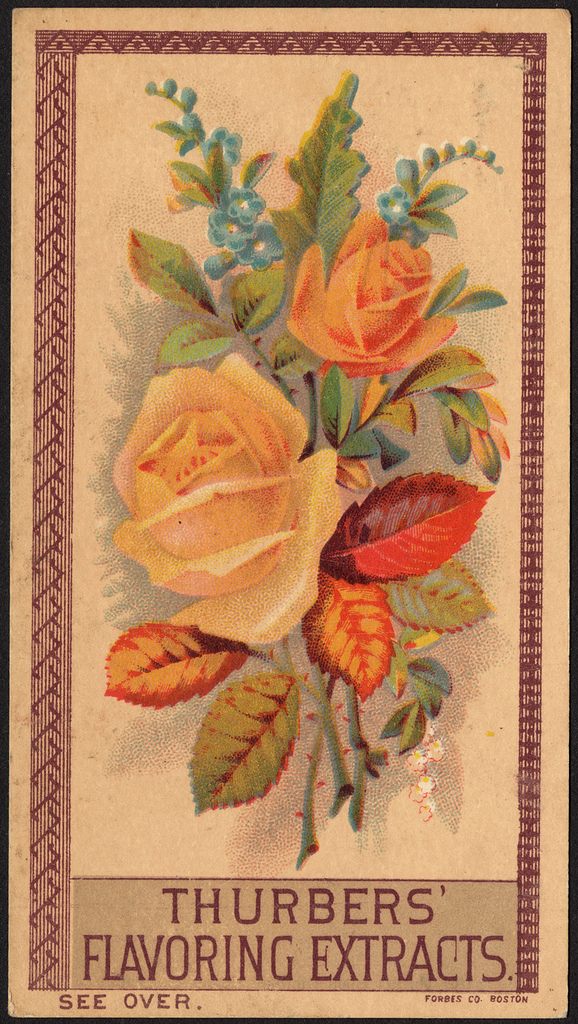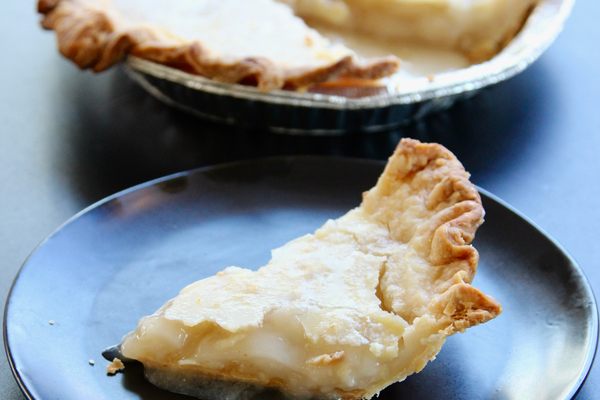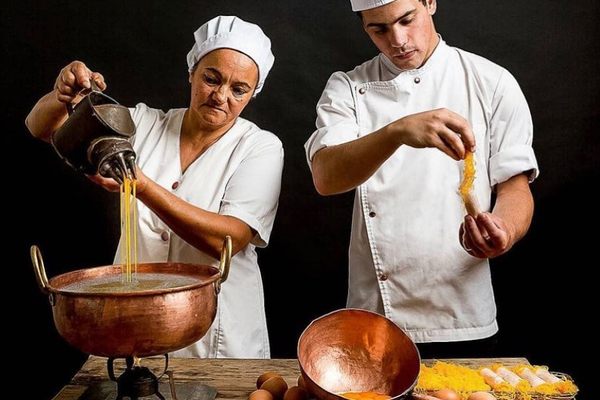The Downfall of Rose Water, Once America’s Favorite Flavor
Until the 1840s, adding a dash of rose water to sweets was the norm.

Every morning, pie bakers find themselves elbow-deep in several requisite ingredients, including flour, butter, eggs, and vanilla extract. While a dash of vanilla extract is a hallmark ingredient for sweets, American bakers in the early 19th century reached into the cupboard for something else altogether: rose water.
Food trends are as old as food itself, and evolve from generation to generation. While rose water is considered an exotic ingredient nowadays, it didn’t use to be. Up until the 1840s, nearly every pie, cake, and cookie recipe called for a dash of rose water—an addition that gave desserts a subtle floral aroma and a slightly earthy taste.
America had a taste for rose water because England had a taste for rose water, and England had a taste for rose water because of The Crusades. “All the Crusaders marched off to the Middle East to defeat the infidels. What they did was they picked up an awful lot of Middle Eastern foodways,” says Sandy Oliver, a colonial food historian. The Crusaders became particularly fond of desserts that used rose water and orange blossom water. When they returned home, they made rose water by steeping fragrant roses in water. Then the English brought rose water with them when they sailed to America.
By the 18th century, Oliver says, the taste of America was “rosewater, cream, and sherry.” The floral water appeared everywhere in cookbooks, such as American Cookery by Amelia Simmons, published in 1796. In it, an apple pie recipe calls for “rose-water and sugar to your taste,” as do recipes for various puddings, custards, tarts, syllabub (a kind of frothy drink), cakes, and gingerbread. Modern Domestic Cooking, published in 1829, includes tips for making superior rose water. Home cooks used their own rose water in “French flummery,” macaroons, drop biscuits, and every kind of cake. Even William Henry Harrison’s favorite pound cake featured rose water.

In the mid-1800s, however, American palates abruptly shifted from favoring floral-flavored desserts to those with lemon and vanilla extract. To most Americans, vanilla’s appeal stemmed from its novelty. The only issue? “Until the 1840s, vanilla was incredibly expensive: wanted by all, but only the elite could afford it,” writes food historian Sarah Lohman in Eight Flavors. Thomas Jefferson, for instance, returned from a visit to France with a taste for vanilla ice cream, and ordered vanilla pods for 24 shillings a bean in 1791. For comparison, the average agricultural worker made about 3 shillings a day. As Lohman notes, “Europeans were far more likely to chow down on more common flavors such as violet, orange, or rye bread ice cream than vanilla.”
But in 1841, Edmond Albius, a 12-year-old slave from Réunion (then known as Île Bourbon, where the term “bourbon vanilla” comes from) developed the technique of quickly hand-pollinating the vanilla orchid using a stick and a careful flick of his thumb. Prior to Albius’ discovery, people relied on insects to pollinate vanilla, and then on a much more time-consuming method of hand-pollination that botanist Charles Morren developed. Since not much vanilla could be produced at a time, vanilla stayed a rarity. Albius’ discovery, a result of his passion for botany, caused vanilla to evolve from a luxury ingredient into something the average middle-class household could afford practically overnight.

“If you had the capacity to buy flour, sugar, make cakes, you probably could acquire vanilla,” Oliver says. As a consequence, rose water became passé. By 1896, culinary aficionado Fannie Farmer, whose Boston Cooking-School Cookbook was a household standard for many middle class women, implemented vanilla in recipes for cakes, cookies, chocolate, croquettes, and an omelet soufflé. Farmer suggested rose extract for wafers and frosting, but only if they were colored pink. Eventually, rose scents stopped reminding Americans of pie and became solely associated with soaps, perfumes, and toiletries.
Vanilla’s allure as a new, luxury-turned-affordable ingredient can help explain its rise. It became the all-American ingredient—and a white one too. As it gained popularity, the French press claimed Albius was white, and French botanist Jean Michel Claude Richard said he taught Albius his vanilla-pollinating technique.

Vanilla’s longevity is harder to explain, though. Why hasn’t a new trend usurped it? It may just be that vanilla tasted better. The combination of vanilla, sugar, and cream alighted our tastebuds in a way rose water never did. We liked our pies better with vanilla, whether as a flavoring in the crust or in vanilla ice cream. Maybe we were waiting for a rosewater replacement all along. Then again, maybe rose water had to go away for white Americans to “discover” the ingredient all over again. New generations love a good trend, especially if it seems foreign—despite the fact that many people, including Middle Eastern-Americans, have been cooking with it for centuries. But rose water is as American as apple pie—even if it makes the pie taste a little like perfume.
Gastro Obscura covers the world’s most wondrous food and drink.
Sign up for our regular newsletter.


























Follow us on Twitter to get the latest on the world's hidden wonders.
Like us on Facebook to get the latest on the world's hidden wonders.
Follow us on Twitter Like us on Facebook